
922F
Patron-
Posts
1,397 -
Joined
-
Last visited
-
Days Won
7
Content Type
Profiles
Forums
Blogs
Gallery
Events
Store
Everything posted by 922F
-
Thank you Emmanuel! As usual, you have the goods!! Note that the badge format [first figure below] adapts that of the obsolete French Ordre de l'Économie nationale [second figure below] with differing color enamel, suspension and central medallion. Candidate for spot the difference thread!
-
Best easily available images on-line at http://wawards.org/oldwawards/en/oldwawards/ru/togo.html. At one time the President of Togo website contained images of all Togo awards--do not see them there now. The star of the National Order of Merit design shown there was not exactly as the one above above. You might contact the National Orders Chancery in Lome via the President's office website. Grand Cross insignia were on display at the Paris' Museum of the Legion of Honor -- you could inquire there. Charles DeGaulle's insignia was displayed at the Museum of the Order of the Liberation in Paris {Togo awarded him both the higher rank Order of Mono and National Order of Merit}. Arthus Bertrand of Paris manufactured the insignia up until at least 1997 and may still make it.
-
please ID a medal, probably Mexican
922F replied to Stuka f's topic in Rest of the World: Militaria & History
5 point star with brilliants---Possibly Masonic, veteran or other fraternal organization insignia. What is the design on the ribbon with bullion fringe? -
Thank you for posting these.....and please add more as time permits! The uniformed Albanian officer appears to wear a Zog type hat badge as well as shoulder boards.
-
Question about the Order of Ismail/Nishan al-Ismail
922F replied to Rusty Greaves's topic in Middle East & Arab States
Rusty, Have you found evidence or suggestion that some British recipients obtained sashes in the British style [January 15 post above] at/on their own initiative? -
Serbia Serbia - KARAGEORGE BRAVERY AWARD
922F replied to andyg's topic in Southern European & Balkan States
Hi David, Just saw your post. In my experience, the Order's silver crosses seem very difficult to find. Rarely they appear on eBay [sometimes on French eBay]. eMedals had them in the past. Just keep on checking dealer's lists and good luck! -
Generic cheap type manufacture [note inappropriate size suspension crown, open ring between crown & ribbon loop, lack of devices between arms, and uni-face enamel]. Similar crosses appear regularly for sale on Italian eBay, usually with red ribbons. Very likely what Guy Stair Sainty and his ilk identify as insignia of a self-styled St. John organization.
-
I do not know enough about Slovak ribbon devices to hazard a guess. Have seen applied eagle badges in silver, gilt and gilt w/enamel however. Sometimes it seems that awards from one country are mounted together rather than in rank order. Probably Spanish Campaign ID is correct. The last sentence of my post above should read If next one is blue color MAYBE Yugoslav Crown
-
First Kingdom type ca. 1877-1932. Look at edge of bottom arm, may find maker name Weiss or.... Images below for ribbon. Slight variance in blue stripes occurs.
-
Question about the Order of Ismail/Nishan al-Ismail
922F replied to Rusty Greaves's topic in Middle East & Arab States
Rusty- Star next to Nile commander and below KBE star appears to be an Al-Nada; see Owain Raw-Rees' The Order Of Al Nahda of the Kingdom of the Hijaz at http://www.rogersstudy.co.uk/hejaz/al_nahda/al_nahda.html likely first class. For image of that insignia, in addition to Owain's work, see: https://www.mortonandeden.com/wp-content/uploads/2019/11/web106-1.pdf , lot 771. -
Some Portuguese makers [e.g. Da Costa] use relatively thin metal, each side indented punched or engraved line cravat loops. Stefi8's example one might have a Portuguese type replacement. Jah Jim, do you recall whether Worth or Da Costa made more than samples of Ethiopian awards? The Michael of the Wing commander image below gives an idea of what these type suspensions look like though it's too small to give an accurate, true impression.
-
In the mid-late 1970's, the rectory of the Church of the Redeemer in Jerusalem had a wall cabinet containing awards of former pastors and provosts in the provost's private reception room. It contained at least one Jerusalem Cross and several Olberg Crosses. These were not mounted in medal groups. Recall similar cabinets in the Armenian Patriarch's private formal dining room, one of which displayed an Olberg Cross. No idea of provenance. Perhaps these were gifts from travelers and not awards to provosts [or the Patriarch] as they would not appear to be members of the official party. A donation to the Augusta Victoria Hospital Foundation may explain the Olberg Crosses. What seemed to be a put-together bar [similar to 1980's Ohio type but without the 'hook' and good ribbons] with both a Jerusalem and an Olberg Cross appeared at a Greenbelt, MD, USA show maybe in '84. The bar included a Prussian Crown 3rd, an Ernestine knight lst, two or 3 German state civil medal, a Turkish Osmanie reduced size officer, and a Greek Redeemer. The Jerusalem Cross was in first place & the Olberg in second, which seemed odd. That one may still be out there.
-
Help needed with (possibly) two Russian orders
922F replied to Lefty's topic in USSR: Soviet Orders, Medals & Decorations
First appears to be Coro type manufacture costume jewelry popular in the 1950's. Second looks like a casting fitted for use as a pendant. Such items used various design elements taken from insignia & order hardware. Examples of Coro work follow: -
Bavarian Maximilian Order - 1980
922F replied to 922F's topic in Germany: Post 1945: Bundesrepublik & DDR
Hello Nick and thank you for this information, images and, most of all, for your good wishes! These images reveal high manufacture quality of a very rare 'modern' award. The document [to Martha Mödl the opera singer?] indicates the quality of persons honored with this decoration. All best regards, EJ -
For general Information. A colleague reminded me that the State of Bavaria renewed the Maximilian Order years ago and provided the following information. Insignia supposedly made by Hemmerle, Munich largely duplicates that of the 1853 Order save for the suspension. Bavarian Maximilian Order The Bavarian Maximilian Order for Science and the Arts is awarded in recognition of outstanding achievements in the fields of science and art and represents a particularly high state honor. The number of order holders should not exceed one hundred. The award goes to German scientists and artists. The Order is awarded in a class to men and women. The ceremony takes place every two years. The Order is awarded by the Prime Minister. The Prime Minister is entitled to submit proposals, while the Ministers of State and the two departments of the Order are responsible for their areas of business. The Bavarian Maximilian Order for Science and Art was created in 1980, following on from the original donated by King Maximilian II in 1853.
-
Emmanuel didn't Nelson Mandela receive the Order of Excellence of Guyana in 2006 or thereabouts?
-
Erinnerung an die "Emden"
922F replied to fitzceraldo's topic in Deutsche Kaiserreich: Man spricht Denglish
Wonderful images! -
Black enamel cross likely German Knight's Cross aka Randow Cross; silver cross probably a Russian exile St. George cross if centre is knight slaying dragon.
-
Thank you! I do not understand either but good photos!

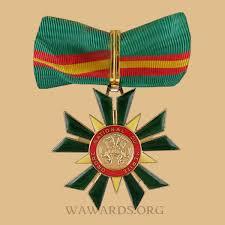
.jpg.42f51ce82743d7e799e822a2f003c007.jpg)

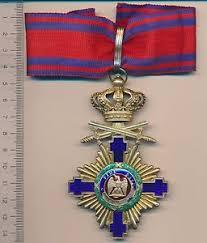

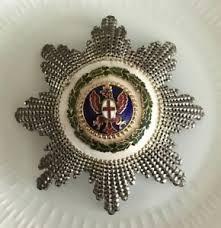
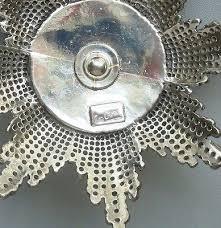
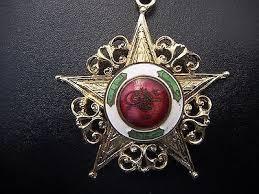
Andmen(r.)enlarge.jpg.c54dc92a7b9409cb9d3f39f01fa1ca19.jpg)